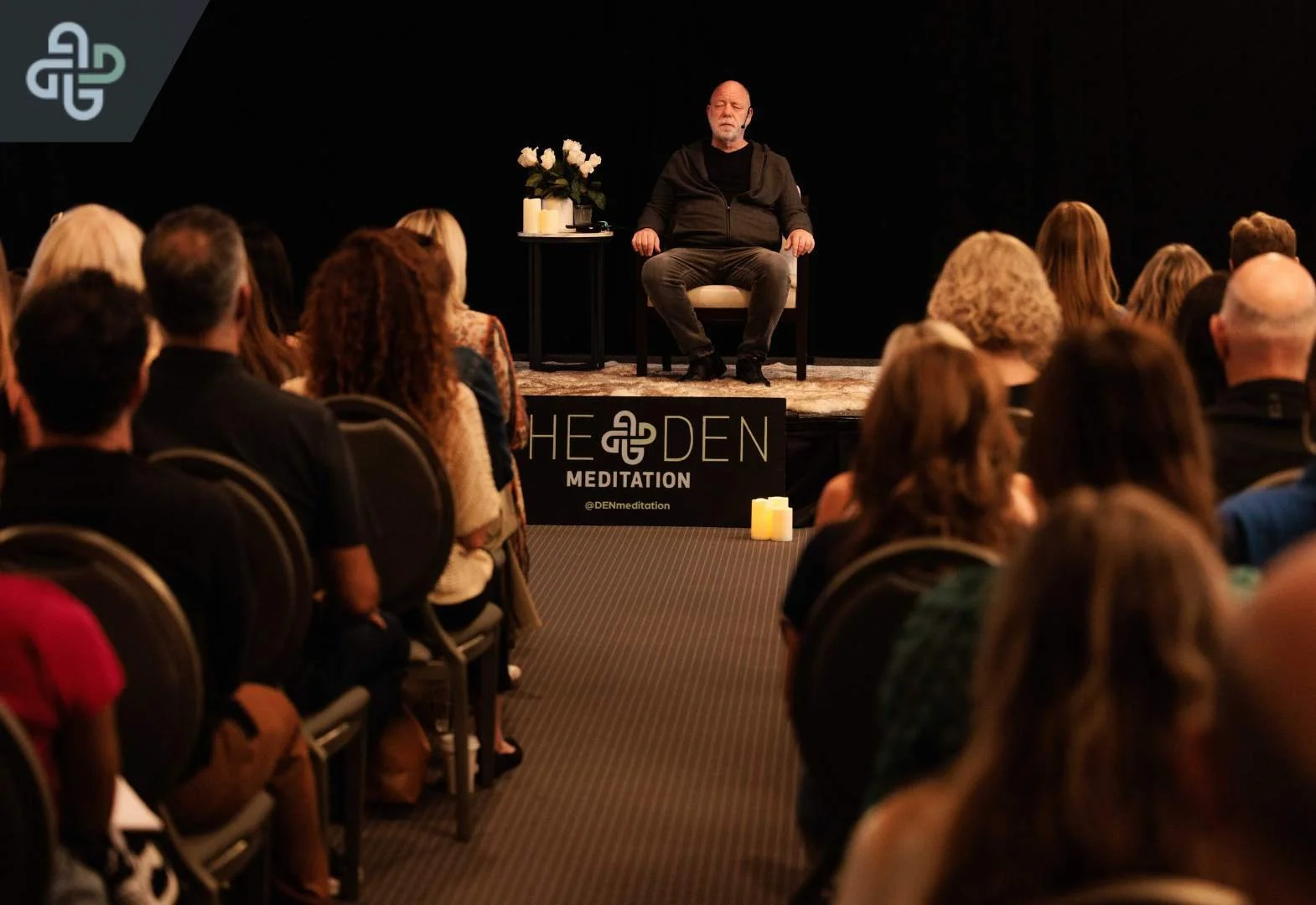How to Choose the Right Meditation Technique
Starting a meditation practice can feel surprisingly complicated. You search for guidance, and suddenly you’re looking at a long list of techniques: mindfulness, body scan, breath awareness, loving-kindness, mantra, transcendental, visualization, and wondering which one is “right” for you.
The truth is, there’s no one-size-fits-all approach. Meditation works best when it feels intuitive, safe, and aligned with your needs. The DEN Meditation has helped thousands of students explore this path, and what we’ve seen time and again is that clarity comes not from choosing the “best” method but from choosing the one that fits who you are right now.
Let’s break down how to identify what works for you and how to explore techniques with more confidence and less confusion.
Start with Your Intention
Before picking a technique, it helps to ask a simple question: What do you want to get out of your practice?
You don’t need a big, spiritual answer. It could be that you’re looking to calm racing thoughts at night. Maybe you’re managing chronic stress or trying to feel more connected to your emotions. Some people come to meditation because they want a deeper understanding of themselves. Others are looking for a simple tool to get through a busy week.
Your reason will shape your approach. For example:
If you’re seeking calm and stress relief, body scans or breath awareness can be deeply grounding. You might also explore how meditation can improve sleep if nighttime anxiety is your main concern.
If emotional healing is your goal, practices like loving-kindness or guided visualizations can help.
If you want focus or mental clarity, mindfulness or mantra meditation may be more effective. And if your workplace has been a major source of tension lately, it’s worth reading about how meditation reduces workplace stress.
At The DEN, many students start by articulating this one intention. It’s often the clearest way to match a technique with a real need.
Explore the Techniques Side by Side
Here’s a closer look at the most common meditation practices, along with real-world notes from our community on how they tend to land for different types of people.
1. Mindfulness Meditation
This involves sitting quietly and observing your breath, thoughts, sensations, or surroundings without judgment. The aim is to remain present with what is.
What it helps with: Anxiety, attention span, emotional regulation
Who it resonates with: People who are overthinkers, analytical minds, or those seeking structure
Note from The DEN: This is one of the most commonly taught practices in our beginner workshops because it’s simple to start and doesn’t require any prior experience or belief system. If you're just starting out, you may find 10 reasons to start a meditation practice today helpful in building motivation.
2. Body Scan Meditation
Here, the attention moves slowly through the body, starting at the toes and rising upward, while noticing tension, sensation, or stillness. It promotes deep physical relaxation and increased bodily awareness.
What it helps with: Sleep support, muscle tension, chronic stress
Who it resonates with: Those who feel stuck in their heads or carry stress in their bodies
Real-life insight: One of our students shared how a nightly 15-minute body scan helped reduce her migraines and improved the quality of her sleep after just a few weeks.
3. Loving-Kindness (Metta) Meditation
This practice focuses on repeating simple phrases of goodwill directed toward yourself and others. It’s soft, often emotional, and creates space for compassion.
What it helps with: Resentment, loneliness, grief, emotional healing
Who it resonates with: People navigating difficult relationships or those craving a deeper connection
Instructor tip: Many of our evening classes begin with Metta when emotions feel heavy or tender. It’s one of the most healing practices we’ve seen for students going through life transitions.
4. Breath Awareness
This is a foundational technique. You simply notice your natural breath—where it moves in the body, its rhythm, its depth—and return to it when the mind wanders.
What it helps with: Anxiety, overthinking, grounding
Who it resonates with: Beginners, busy minds, or anyone who wants to keep it simple
Common feedback: Students who thought they couldn’t meditate often start here and realize they can.
5. Mantra Meditation
This method uses a repeated sound, word, or phrase to help anchor the mind. It can be traditional (like Sanskrit mantras) or completely personal.
What it helps with: Focus, mental noise, spiritual connection
Who it resonates with: People who get distracted easily or who prefer repetition over silence
From the community: One of our facilitators described mantra meditation as “a rhythm for the mind to rest in.”
6. Movement Meditation
For those who find sitting still uncomfortable, mindful walking, gentle yoga, or Qi Gong offer powerful alternatives. These practices use movement to connect with the present.
What it helps with: Restlessness, tension, sensory overload
Who it resonates with: Kinetic learners, creatives, people who feel overwhelmed by stillness
DEN favorite: Our retreat participants often engage in walking meditations outdoors. Many say it’s the first time they’ve truly “listened” to their body.
Ask Yourself These Questions Before You Choose
Instead of picking a practice based on popularity, ask yourself:
What time of day will I meditate?
Do I feel more connected through sound, silence, or movement?
Is my body comfortable in stillness, or do I need a technique that includes motion?
Do I want to meditate solo, in a group, or with guidance?
Am I looking for insight, rest, emotional support, or structure?
The clearer you are about your needs, the easier it becomes to find a method that will support them.
Let It Be a Journey, Not a Decision
We remind our students often: you’re not marrying a method. You’re just meeting one.
Meditation is less about mastering a technique and more about meeting yourself as you are, in the moment. Some people stick with the same practice for years. Others shift every few months, depending on their inner landscape. That’s not an inconsistency. That’s responsiveness.
You’re allowed to change your mind. You’re allowed to evolve. Even small, consistent steps can improve your emotional well-being. Our blog on the mental health benefits of daily meditation goes deeper into this transformation over time.
Looking for Guidance?
You don’t have to figure it out alone. If you’re unsure where to begin or what direction to go next, our classes, workshops, and private sessions are here to guide you.
Browse our class schedule to explore different meditation styles
Join a workshop for a deeper exploration of specific techniques
Retreat with us if you’re ready to disconnect and go inward with expert support
Final Thoughts
Choosing the right meditation technique isn’t about getting it perfect. It’s about noticing what helps you feel more whole, even in small ways. What softens your mind? What makes you want to return the next day?
The “right” practice is the one you’ll actually do. And that’s something you’ll only know by trying.
The door is open. Your seat is waiting. You’re invited to find what fits.




